The National Hockey League (NHL) is a dynamic and competitive sports league with teams spanning North America. While hockey’s heart beats loudest in Canada and northern U.S. states, a striking phenomenon stands out: some states host not just one, but multiple NHL teams.
From the bustling metropolises of New York to the sunny shores of California, the presence of multiple franchises sparks curiosity. What fuels this phenomenon?
In this blog post, we embark on an exploration of why certain states boast the privilege of housing multiple NHL teams.
Behind this intriguing development are a multitude of factors – from population density and historical legacy to fierce rivalries and economic viability. We’ll delve into the multifaceted world of NHL expansion and the intricate dynamics that allow multiple teams to coexist within the same state.
Join us as we dissect the essence of this phenomenon, understanding how it influences fan culture, rivalries, and the very identity of the states themselves.
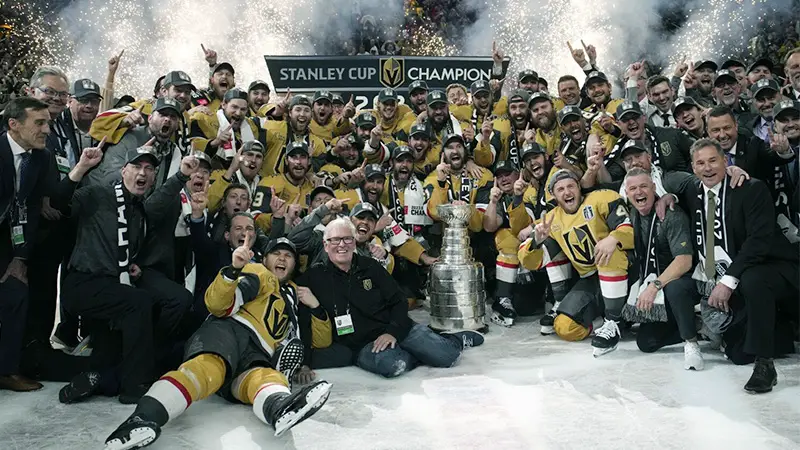
Do Some States Have Multiple NHL Teams?
Yes, some U.S. states have multiple National Hockey League (NHL) teams. Several states are home to more than one NHL franchise. Here are some examples:
- New York: New York has two NHL teams: the New York Rangers, who play in Manhattan, and the New York Islanders, who play on Long Island. Both teams have a strong fan base.
- California: California has three NHL teams. The Los Angeles Kings and Anaheim Ducks are located in Southern California, while the San Jose Sharks are in Northern California.
- Florida: Florida also has two NHL teams. The Florida Panthers are based in Sunrise, near Fort Lauderdale, while the Tampa Bay Lightning are located in Tampa.
- Pennsylvania: Pennsylvania is home to two NHL teams. The Philadelphia Flyers are in the eastern part of the state, while the Pittsburgh Penguins are in the western part.
- Illinois: Illinois has two NHL teams, with the Chicago Blackhawks being the most well-known, and the relatively newer team, the Chicago Wolves, who play in the American Hockey League (AHL), a professional minor league often associated with the NHL.
- Missouri: Missouri is home to two NHL teams. The St. Louis Blues are based in St. Louis, while the Kansas City Scouts (now known as the New Jersey Devils) briefly existed in the 1970s before relocating.
These are some examples, but there may be more as the NHL has expanded and evolved over the years. Keep in mind that not all U.S. states have NHL teams, and some states have multiple teams, while others have none.
Why Do Some States Have Multiple NHL Teams?
The presence of multiple NHL teams in some states can be attributed to several factors:
Population and Market Size
States with large populations and significant hockey fan bases are more likely to support multiple NHL teams. For example, California and New York have multiple teams due to their large populations and strong hockey traditions.
Economic Viability
The NHL is a business, and teams need to be economically viable to survive. States with strong economies can often support more than one team. For instance, California’s robust economy can support three teams in the state.
Historical Factors
Some states may have multiple teams due to historical reasons. For example, the rivalry between the New York Rangers and the New York Islanders dates back to the 1970s when the Islanders were established as an expansion team. This rivalry has helped sustain interest in both teams.
Geographical Distribution
Geographical factors can also play a role. States with a significant distance between major cities may be more likely to have multiple teams to serve different regions.
For example, Illinois has the Chicago Blackhawks in the north and the Chicago Wolves (an AHL team) to serve the Chicago metropolitan area.
Franchise Expansion
The NHL has expanded over the years, adding new teams in various cities. Sometimes, these expansions occur in states that already have existing teams.
For example, when the NHL expanded to include teams in San Jose (Sharks) and Anaheim (Ducks), California ended up with three NHL teams.
Ownership Groups
The willingness and financial capability of ownership groups to invest in and operate NHL teams in a particular state can also lead to multiple teams.
If there are individuals or organizations interested in owning and operating teams in a state, it can result in the presence of multiple franchises.
Fan Demand
Ultimately, the presence of multiple NHL teams in a state often comes down to fan demand. If there is a strong desire for hockey and a fan base willing to support multiple teams, it becomes more feasible for the NHL to establish or maintain multiple franchises within a single state.
It’s worth noting that not all states with multiple NHL teams have the same level of success or popularity for each franchise. Some teams may have a more substantial following or a longer history in the state, while others may be newer or face more significant challenges in terms of fan support.
Expansion of NHL Teams All Over the World
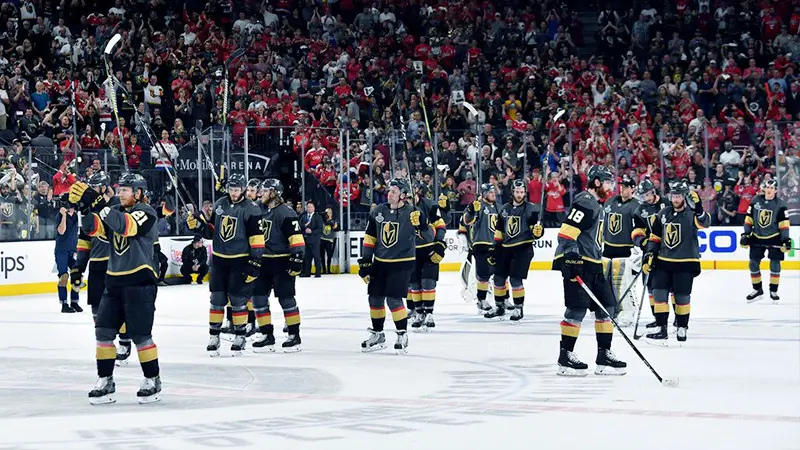
the National Hockey League (NHL) primarily consists of teams located in the United States and Canada. However, the NHL has a history of expanding its reach beyond North America. Here’s an overview of the NHL’s expansion efforts and potential future expansions all over the world:
Historical NHL Expansion
Canada Expansion
The NHL began as a six-team league in 1942, known as the “Original Six.” In 1967, it expanded by adding six new teams, including two in Canada: the Montreal Canadiens, Toronto Maple Leafs, and other original teams were joined by the Vancouver Canucks and the Calgary Flames.
The Edmonton Oilers and Ottawa Senators later joined, further solidifying the NHL’s presence in Canada.
United States Expansion
The NHL’s expansion into the United States began in earnest in the late 1960s. Teams like the Los Angeles Kings, Minnesota North Stars (now the Dallas Stars), and others were added.
Subsequent expansions brought teams to cities like Tampa Bay, Anaheim, San Jose, and more. The league’s reach in the U.S. expanded significantly during this period.
International Exhibition Games
While not formal expansion, the NHL has a long history of playing exhibition games against international teams and participating in events like the Canada Cup and the World Cup of Hockey. These events have helped promote the NHL globally.
Current International Presence
Europe
The NHL has been actively exploring the possibility of expanding its footprint in Europe. Various initiatives have been discussed, including the potential for European-based teams or more frequent regular-season games played overseas.
The NHL also launched the Global Series, which featured regular-season games in European cities like Stockholm and Prague.
China
The NHL has shown interest in growing the sport in China. The NHL China Games were held in 2017 and 2018, featuring preseason games between NHL teams in Beijing and Shenzhen.
The league has been working on developing grassroots programs and partnerships to increase hockey’s popularity in China.
Future Expansion Possibilities
European Expansion
Expanding the NHL into Europe is a long-term goal for the league. It presents several challenges, including travel logistics, time zone differences, and potential competition with established European hockey leagues.
However, the large and passionate hockey fan base in Europe makes it an attractive market for potential expansion.
Additional U.S. and Canadian Markets
The NHL may consider further expansion in the United States and Canada, particularly in regions with strong hockey traditions and growing populations.
Cities like Seattle, which was awarded an expansion team (the Seattle Kraken), serve as examples of this strategy.
Global Events
The NHL will likely continue to organize international events, such as the Winter Classic, Heritage Classic, and NHL Global Series, to showcase the sport to a global audience and potentially lay the groundwork for future expansions.
It’s essential to note that any NHL expansion, whether domestic or international, involves careful planning, financial considerations, and logistical challenges. The league evaluates factors such as market size, ownership groups, arena facilities, and fan interest before awarding franchises.
Expansion decisions are typically made after thorough analysis and consideration of all relevant factors.
Rivalries and Fan Engagement in NHL
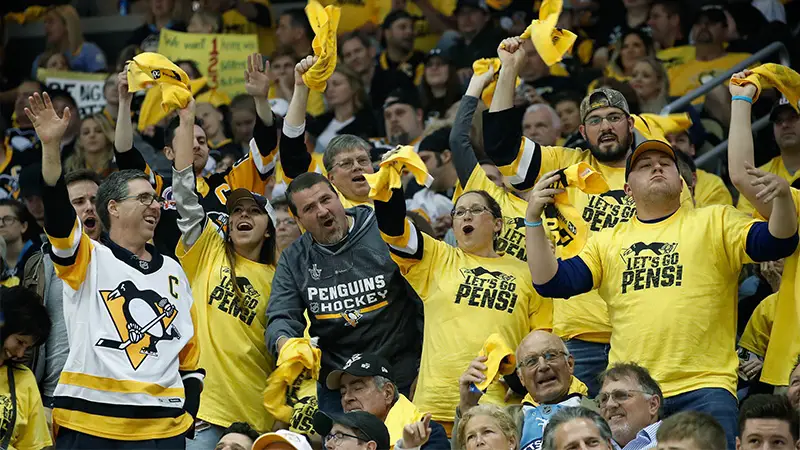
Rivalries and fan engagement are integral parts of the National Hockey League (NHL) experience. These elements contribute significantly to the excitement and passion surrounding the sport.
Here’s a closer look at how rivalries and fan engagement play a crucial role in the NHL:
Rivalries
Rivalries are intense and longstanding matchups between NHL teams. They often develop for various reasons, including geographical proximity, historical confrontations, playoff battles, or simply a shared competitive spirit.
Rivalries are characterized by heightened emotions, fierce competition, and a deep-seated desire to beat the opposing team. Some of the most notable NHL rivalries include:
- Montreal Canadiens vs. Boston Bruins: Known as one of the most storied rivalries in NHL history, these two Original Six teams have a rich history of playoff clashes and intense regular-season matchups.
- Edmonton Oilers vs. Calgary Flames: This Battle of Alberta rivalry pits two Alberta-based teams against each other and has featured numerous high-scoring games and iconic moments.
- Chicago Blackhawks vs. Detroit Red Wings: The rivalry between these Original Six teams has been fueled by their close proximity in the Midwest and multiple playoff meetings.
- New York Rangers vs. New York Islanders: The Battle of New York features two teams from the same state and games between them are often intense and highly anticipated.
Rivalry games typically draw larger television audiences and higher attendance at the arenas due to the added drama and excitement. The history and tradition of these rivalries contribute to their enduring appeal.
Fan Engagement
Fan engagement is crucial for the NHL’s success, and the league has employed various strategies to connect with its fan base:
- Social Media: The NHL has a strong presence on social media platforms, where fans can follow their favorite teams and players, engage in discussions, and access exclusive content. Teams often share highlights, behind-the-scenes footage, and fan-generated content to keep fans engaged.
- Fan Events: NHL teams host fan events, including open practices, meet-and-greets with players, and fan appreciation nights. These events provide fans with opportunities to interact with the team and players in a more personal way.
- Fantasy Hockey: Many fans participate in fantasy hockey leagues, which adds an extra layer of engagement as fans select their own virtual teams and compete against each other.
- Merchandise and Apparel: The sale of team merchandise and apparel is a significant part of fan engagement. Fans proudly wear jerseys, hats, and other gear to show their support for their favorite teams.
- Community Outreach: NHL teams are actively involved in their communities through charitable initiatives, youth hockey programs, and educational outreach. These efforts help build strong connections between teams and their local fan bases.
- Interactive Stadium Experience: In-arena experiences have become more interactive, with features like jumbotron contests, interactive games, and fan participation events during intermissions.
- Broadcast Innovation: The NHL continually seeks to enhance the viewing experience for fans through improved broadcasts, including better camera angles, real-time statistics, and virtual reality options.
The NHL recognizes the importance of engaging fans across various demographics and regions. By nurturing rivalries and employing fan engagement strategies, the league aims to create a sense of community and excitement among hockey enthusiasts and grow its global fan base.
How Ownership Groups Contribute to Multiple Teams?
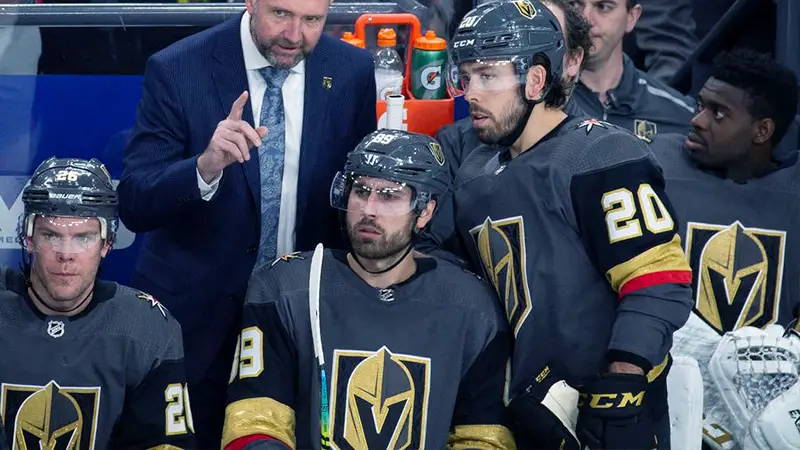
Ownership groups can contribute to the existence of multiple sports teams in a variety of ways, including within the context of the National Hockey League (NHL). Here’s how ownership groups can have an impact on multiple teams:
Financial Resources
Ownership groups with significant financial resources are often better positioned to acquire and support multiple sports teams. Owning one successful team can generate revenue and profits that can be reinvested in other sports ventures.
For example, an ownership group that owns an NHL team might also have the financial capacity to own a professional basketball or soccer team.
Cross-Promotion
Ownership groups can leverage their multiple teams to cross-promote their franchises. For instance, if one team is performing well, it can create positive publicity and interest that benefits the other teams within the same ownership group.
This can lead to increased attendance, merchandise sales, and sponsorship opportunities for all teams.
Shared Resources
Ownership groups can centralize certain resources and services, such as marketing, sales, and administrative functions, for multiple teams. This can result in cost savings and operational efficiencies.
Additionally, ownership groups can share best practices and strategies across their teams to improve overall performance.
Stadium and Arena Ownership
Owning the venues where the teams play can be a significant advantage for ownership groups. It provides control over scheduling, concessions, and other revenue streams associated with the arena.
This ownership can be beneficial for both the NHL team and any other sports teams that use the same facility.
Diversification
Owning multiple sports teams in different leagues or markets can provide diversification for an ownership group’s portfolio. This can help mitigate risks associated with the performance of any single team or league.
For example, if one team is struggling, revenue generated by other teams can help offset losses.
Development and Investment
Ownership groups can invest in the development of sports infrastructure and facilities within a region. This can include building new arenas or stadiums, which can potentially attract additional sports teams, events, and revenue opportunities.
Community Involvement
Ownership groups often play a significant role in the communities where their teams are based. They may invest in community programs, youth sports, and charitable initiatives, which can enhance their reputation and build goodwill among fans and residents.
Expansion Opportunities
Ownership groups may actively seek opportunities to expand their portfolio by acquiring new sports teams or participating in league expansion efforts. This expansion can lead to a stronger presence in the sports industry.
Leagues may have rules in place to ensure that ownership groups do not create conflicts of interest or engage in anticompetitive practices. Ownership changes and acquisitions often require approval from the league’s board of governors or a similar governing body.
Ultimately, ownership groups that have the financial means, business acumen, and commitment to the sports industry can play a significant role in contributing to the success and sustainability of multiple sports teams within their portfolio.
NHL Expansions and Their Impact on States with Multiple Teams
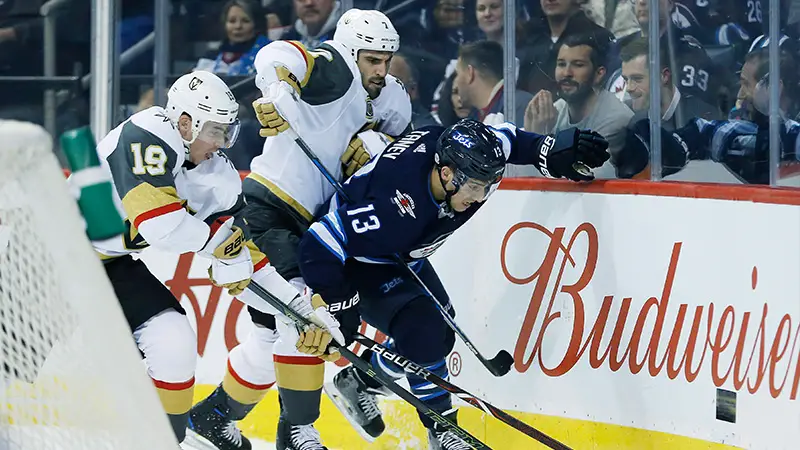
NHL expansions have a significant impact on states with multiple teams. These expansions can both enhance and reshape the dynamics of the NHL in those states. Here’s how NHL expansions affect states with multiple teams:
Increased Competition
- Rivalries: NHL expansions often lead to the creation of new rivalries or the rekindling of existing ones. When a new team enters a state with multiple NHL teams, it can result in intense rivalries among the teams. These rivalries can boost fan interest and engagement, leading to more competitive games.
- Divisional and Conference Realignment: Expansions can also necessitate changes in the league’s structure. Teams may be realigned into different divisions or conferences to accommodate the new franchises.
This can impact the regular-season schedule and playoff matchups, potentially intensifying competition within the state.
Fan Base Expansion
- Broadening the Hockey Fan Base: Expansions can help grow the overall hockey fan base within a state. New fans may be attracted to the sport, especially if they live closer to the new team’s location. This can result in more widespread interest in hockey across the state.
- Cross-Fandom: In states with multiple teams, fans may develop cross-fandom, supporting both local teams or adopting the new team as their “second” favorite. This can lead to increased attendance at games and greater television viewership.
Economic Impact
- Increased Revenue: The addition of a new team can boost the local economy. It creates opportunities for job growth, increased tourism, and higher revenue for local businesses, including restaurants, hotels, and merchandise shops.
- Arenas and Infrastructure: Expansions may lead to investments in new arenas or the renovation of existing facilities, which can have long-term economic benefits for the state.
Marketing and Exposure
- Media Coverage: Expansions generate media attention and coverage, which benefits all NHL teams in the state. Local media outlets may increase their coverage of hockey, providing more exposure for all teams and players.
- League Promotion: The NHL often promotes the arrival of new franchises, which can raise awareness of the sport and its existing teams. This can be particularly beneficial for states with multiple teams.
Challenges
- Shared Market: In some cases, NHL expansions can lead to increased competition for fans’ attention and financial support. Established teams may need to work harder to maintain their existing fan base and attract new fans, especially if the new team performs well.
- Arena Availability: Scheduling games in arenas shared by multiple teams can become more complex with the addition of another franchise. Teams may need to negotiate and coordinate their schedules to avoid conflicts.
NHL expansions can have both positive and challenging effects on states with multiple teams. They can create new opportunities for growth, increased competition, and enhanced fan engagement.
However, they also require careful planning and management to ensure that all teams in the state can thrive in the expanded marketplace. Overall, the impact of NHL expansions on states with multiple teams depends on various factors, including the strength of the teams, the local hockey culture, and the strategies employed by team management.
FAQs
Why do some states have multiple NHL teams?
Multiple NHL teams in a state often result from its large population and strong hockey culture. States like New York and California can support multiple teams due to their size and fan base, making it economically viable for the NHL.
How are NHL teams distributed among states?
The distribution of NHL teams among states is influenced by factors like population, market size, economic viability, and historical factors. States with these attributes are more likely to have multiple teams, while others may have none.
Are rivalries a reason for multiple NHL teams in a state?
Yes, rivalries can play a role. States with multiple NHL teams often have intense rivalries, which drive fan engagement and create a competitive atmosphere. These rivalries contribute to the success and popularity of hockey in that state.
Do expansion teams impact states with multiple NHL teams?
Yes, expansion teams can affect states with multiple NHL teams. They can intensify rivalries, broaden the fan base, and lead to increased economic activity. However, they may also pose challenges in terms of shared markets and scheduling.
What benefits do multiple NHL teams bring to a state?
Multiple NHL teams bring economic benefits through increased tourism, job opportunities, and local business revenue. They also enhance the state’s sports culture, promote fan engagement, and provide a sense of community pride and identity.
Wrapping Up
In the world of professional hockey, the presence of multiple NHL teams within a single state is more than a testament to the sport’s enduring popularity; it’s a vibrant reflection of the passion, culture, and economic vitality that hockey brings to a region.
As we conclude our exploration, we’ve uncovered the myriad factors that contribute to this phenomenon, from rich rivalries and shared marketplaces to the economic advantages of multiple franchises.
These states, with their two or more NHL teams, serve as centers of hockey excellence, nurturing the game’s growth and captivating fans on a grand scale.
Whether you’re a die-hard supporter of one team or relish the thrill of a cross-state rivalry, there’s no denying that these states with multiple NHL teams hold a special place in the heart of the hockey world, ensuring that the puck will continue to drop and the cheers will resound for generations to come.




Benjamin Kenyon